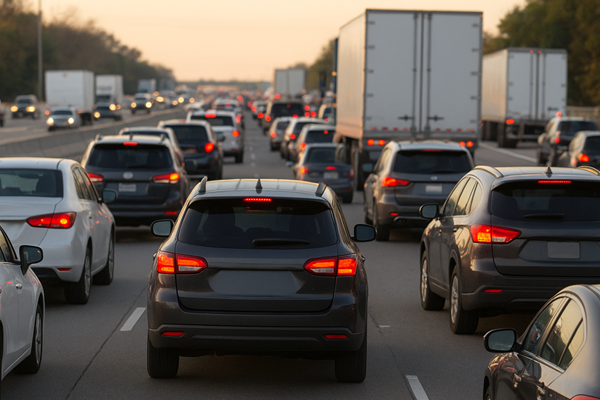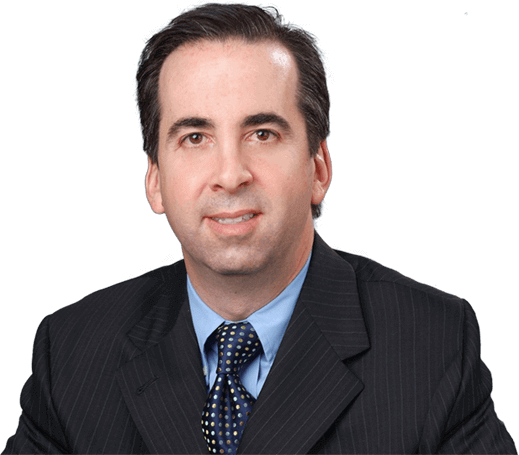Washington, D.C. Just Passed L.A. for Worst Traffic in America

Gridlock isn’t just annoying, it’s dangerous
For years, Los Angeles has been known for its endless gridlock. But according to new rankings from ConsumerAffairs, Washington, DC, has now taken over the top spot as the U.S. city with the worst traffic.
Drivers in the nation’s capital spend more time in their cars than anywhere else in the country. The average commute in the D.C. metro area clocks in at 33.4 minutes, longer than in any other major city.
Factor in both morning and evening rush hours, and congestion stretches across six hours and 35 minutes each weekday. That places D.C. second only to Los Angeles. Added up over the course of a year, that’s the equivalent of 71 days sitting in traffic.
Los Angeles may still have the longest daily congestion window at nearly eight hours, but its average commute is just over 30 minutes. That small difference was enough to drop it to second place in the overall rankings.
Which cities fared better and worse?
The top five cities with the most gridlock are now Washington, D.C., Los Angeles, Miami, San Francisco, and Atlanta. At the other end of the spectrum, Boston, Denver, Portland (Oregon), Chicago, and Austin came out among the best big cities for traffic flow. The absolute least congested cities in the rankings were Rochester, Salt Lake City, and Cleveland.
According to UCLA urban planning professor Michael Manville, there’s an important connection between these results and the economy. \
"The cities with the worst traffic in America are among the cities with the highest economic output," the ConsumerAffairs report noted. Manville added, “Congestion is oftentimes a sign of economic prosperity.” Cities with strong, growing economies attract new residents while keeping long-time ones, which often translates to more cars on the road.
By contrast, cities that once thrived as industrial centers but have since experienced economic slowdowns (e.g., Rochester and Cleveland) have fewer commuters competing for space, leaving more room on the roads.
Why D.C. has surged ahead
So why has Washington, DC, suddenly moved into first place? One key reason is the federal government’s return-to-office policies. President Donald Trump ordered many federal workers back to their offices after years of widespread remote work. With DC’s massive federal workforce, that single policy decision added tens of thousands of cars back into the region’s daily traffic flow.
Public transit use has increased since the pandemic lows, but it has yet to return to 2019 levels. That gap means more commuters are relying on cars instead of buses or trains, which creates extra pressure on already crowded roads. The city’s geography exacerbates the situation. Limited highway capacity and heavy traffic coming in from Virginia and Maryland suburbs create choke points that quickly back up.
For people who live and work in the area, the report’s findings aren’t exactly shocking. One local commuter told WTOP radio he wasn’t surprised by the results. "Traffic in the D.C. region stinks," he said. To cope, he adjusts his schedule. "I schedule my work hours accordingly so I can avoid the traffic."
Common car accident risks created by congested traffic
Traffic congestion isn’t just frustrating. It also creates conditions where car accidents are more likely to happen. The constant stopping, starting, and lane changes increase the chances of both minor and serious crashes. Here are some of the most common risks drivers face when roads are crowded:
- Rear-end collisions: Stop-and-go traffic means drivers are constantly braking, increasing the risk of rear-end collisions. Even a moment of distraction can lead to a rear-end collision. Tailgating is especially risky because there’s little room to react.
- Sideswipe accidents: In heavy traffic, drivers often switch lanes to find a faster route. Quick moves without checking blind spots can lead to sideswipes. Even a small drift in tight conditions can cause damage.
- Multi-vehicle pileups: Congested highways leave little time to react. If one car brakes suddenly, it can trigger a chain reaction involving several vehicles. These accidents are especially common during rush hour.
- Aggressive driving accidents: Frustration behind the wheel often leads to risky choices such as speeding up, weaving through lanes, or cutting others off. In some cases, road rage can escalate and become dangerous.
- Intersection collisions: Heavy traffic encourages bad habits, such as running red lights, blocking intersections, or trying to beat the signal. These behaviors increase the risk of T-bone crashes at busy crossroads.
- Pedestrian and cyclist dangers: In gridlocked city areas, drivers sometimes make sudden turns or try to rush through crosswalks. This raises the risk of hitting pedestrians or cyclists.
- Fender benders and minor collisions: Tight spacing in bumper-to-bumper traffic leaves little margin for error. Small mistakes (e.g., rolling forward too quickly or not noticing a stopped car) often cause low-speed crashes.
Hurt in a crash that wasn't your fault?
If traffic congestion left you injured in a serious car accident, knowing what to do next can be confusing. You're frustrated and overwhelmed by medical bills. You're unable to attend work and earn a living. Meanwhile, you're being hassled by the other driver's insurance company. That's why you need a strong legal advocate on your side, fighting for your rights.
At Law Offices of Stuart L. Plotnick, LLC, we have spent nearly three decades fighting for crash victims throughout Rockville, Montgomery County, and the greater D.C. Metro area. We know how to beat insurance companies at their own game.
When you work with our law firm, you get a team that is relentless about getting results. We can thoroughly investigate what really caused your crash and hold negligent drivers accountable. Whether you were rear-ended in gridlock or struck by an aggressive driver weaving through traffic, we know how to build a strong claim for the maximum compensation you deserve. Best of all, we work on a contingency fee basis. That means you don’t pay us anything up front, and we only get paid if you're fully compensated.
Don’t let an insurance company rush you into a lowball settlement that leaves you covering the costs later. Contact us online or call today to schedule your free consultation. We’ll review your case, answer your questions, and map out the best path forward. One call can put a proven Rockville car accident lawyer on your side, fighting for your rights while you focus on healing.
"Stuart came highly recommended, and I am so glad that I decided to retain him for my case. He was great to work with - knowledgeable and personable." - Cecilia, ⭐⭐⭐⭐⭐

